Pearls of Wisdom – Bonhams Sells Remarkable Necklace of a Major Contributer to WWII's Allied Victory
Lady Houston
On Wednesday 9th December Bonhams Bond Street will host The Art of Jewels: Fine Jewellery and Iconic Gems. One of the major highlights of the sale will be a stunning pearl necklace, belonging to Lady Houston, the renowned philanthropist and benefactor.
The impressive double-row necklace with graduated pearls is expected to fetch £30,000-£50,000. It is made up of large natural pearls of outstanding quality between 5.8-12.8mm.
Their erstwhile owner, Lady Houston, donated a considerable amount of her personal fortune in support of British aviation which would eventually lead to the design of the Spitfire, an integral part of our national defence during WW2.
The life of the famous adventuress was undoubtedly eventful. Born Fanny Lucy Radmall, daughter of a London box-maker, in 1857, she became a professional dancer before eloping to Paris with Frederick Gretton, of the Bass brewing family. In 1883 she married Theodore Francis Brinckman, the eldest son of a baronet. The couple divorced in 1895.
Her second marriage, in 1901, was to George Frederick William Byron, 9th Baron Byron of Rochdale and lasted until his death in 1917. During this period she campaigned as a suffragette and was appointed Dame Commander, Order of the British Empire for her support of a home for nurses who had served in World War One.
Her third and final marriage was in 1924 to Sir Robert Paterson Houston, a Conservative MP and Liverpool ship-owner. When he died, less than 18 months later, he left her £5.5 million (roughly £300 million in today's money) making her one of the richest women in Britain.
After major contributions to aviation, Lady Houston died on 26 December 1936, months after the Spitfire's first flight.
An impressive natural pearl necklace. Photo courtesy Bonhams
Accompanied by a certificate from The Gem and Pearl Laboratory stating that the necklace is composed of natural saltwater pearls. Certificate number 02196, dated 5 November 2009. Estimate: £30,000 - 50,000
Provenance : Lady Houston (1857-1936)
Gifted to the grandmother of the current owner
Thence by direct descent
Other major lots within the sale include a pendant commemorating the Delhi Durbar of 1911, an event brought to recent attention by the current Maharaja exhibition at the V&A. Designed by Boucheron, the central band is set with rose-cut diamonds. It is expected to fetch between £3,000-4,000. The piece was presented to Miss Edith Hamilton by Sir Thomas Gibson-Carmichael, Baron Carmichael (1859-1926), governor of Madras.
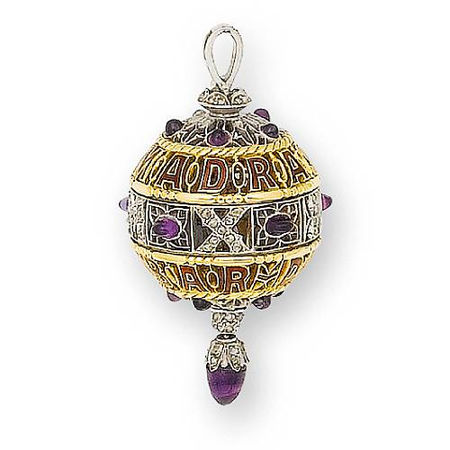
An enamel and gem-set commemorative pendant, by Boucheron, 1911. Photo courtesy Bonhams
The finely pierced openwork pendant of spherical form, set with three horizontal bands, the upper and lower bands in red enamel and inscribed 'Madras Camp' and 'Delhi Durbar', the central band set with rose-cut diamonds denoting the date 1911 in Roman numerals, with cabochon amethyst detail and drop, unsigned, in a fitted Boucheron case, the exterior of the case inscribed 'Delhi Durbar 1911' - Estimate: £3,000 - 4,000
Provenance : Miss Edith Hamilton (1883-1976)
Direct descent to the current owner
According to family tradition this pendant was presented to Miss Edith Hamilton by Sir Thomas Gibson-Carmichael, Baron Carmichael (1859-1926). Miss Hamilton was a cousin of Lord Carmichael's wife and was in India for the Delhi Durbar of 1911.
The Delhi Durbar, meaning "Court of Delhi", was a mass assembly at Coronation Park, Delhi, India. It was held three times in 1877, 1903, and 1911 at the height of the British Empire. The 1911 Durbar, the most glittering assemblage of the three, was held to commemorate the coronation of King George V and Queen Mary as Emperor and Empress of India. Nearly every ruling prince, nobleman, landed gentry and other persons of note in India attended to pay obeisance to their sovereigns. The King and Queen appeared in their Coronation robes, the King-Emperor wearing the Imperial Crown of India containing six thousand one hundred and seventy diamonds and covered with sapphires, emeralds and rubies.
Lord Carmichael was appointed governor of Madras in 1911 and in April 1912, was appointed the first governor of the state of Bengal, a position that had been newly reconstituted and announced by the King-Emperor at the Delhi Durbar. Lord Carmichael is believed to have designed and presented a number of these pendants to his guests at the Durbar. See Bonhams, Fine Jewellery, lot 231, 2 October 2003, for an identical pendant which Lord Carmichael gave to Mrs FF Elwes, wife of Lieutenant-Colonel Frederick Fenn Elwes, Principal of the Medical College, Madras.
A rare piece of Renaissance gold work will also be sold in the sale. Expected to fetch £15,000-20,000 this beautiful piece portrays a maiden bathing by a fountain in the foreground, with the water rendered in blue and white enamel, surrounded by her attendants.
A rare 16th century gold jewel. Photo courtesy Bonhams
Of oval form, in the foreground a maiden bathing by a fountain, the water rendered in blue and white enamel, surrounded by her attendants, the background in polished and textured bas-relief depicting a castle with a figure at a window and a guard on a terrace looking on, within a polychrome enamel and foiled ruby frame, frame probably later, length 4.9cm. Estimate: £15,000 - 20,000
Note: The scene presumably illustrates a scene from the Bible (2 Samuel 11) in which David first spies Bathsheba: "from the roof he saw a woman bathing; and the woman was very beautiful to look upon". The central figures are modelled in high relief illustrating the close relationship between the Renaissance goldsmith and the Renaissance sculptor.
Further lots include a rare gold and micromosaic necklace, by Castellani, circa 1875, expected to fetch £15,000-20,000; a private collection of works by Andrew Grima – the "father" of modern British jewellery design and a gem-quality emerald and diamond brooch/pendant which has been in the family since the early 19th century and was collected by an ancestor in India which is expected to fetch £30,000-40,000.
A rare gold and micromosaic necklace, by Castellani, circa 1875. Photo courtesy Bonhams
Of archaeological revival design, the woven gold chain threaded with spherical and spool-shaped gold beads, suspending a fringe of lozenge-shaped micromosaic drops, alternating with amphorae of pierced and ropetwist decoration, maker's mark, length 40.1cm., cased by S.J.Phillips, London - Estimate: £15,000 - 20,000
An emerald and diamond brooch/pendant. Photo courtesy Bonhams
The central cushion-shaped emerald, weighing 18.85 carats, within a border of brilliant-cut diamonds, suspended from a marquise-cut diamond three-stone surmount, on a fancy-link chain necklace with brilliant-cut diamond three-stone clasp, diamonds approximately 4.30 carats total, detachable brooch and pendant fittings, brooch length 2.7cm., necklace length 39.2cm. Accompanied by a certificate from Gübelin. Estimate: £30,000 - 40,000
Provenance: John Francis Caradoc (formerly Cradock), first Baron Howden (1762-1839)
Theodosia, Lady Howden (d.1853), his widow
John Hobart Caradoc, second Baron Howden (1799-1873)
Gifted to Eleanor Meade, wife of Edward Meade, a first cousin
Direct descent to the current owner
This fine emerald once belonged to John Francis Caradoc (formerly Cradock), first Baron Howden (1762-1839), a distinguished army officer who served during the Napoleonic Wars and who was given a peerage by the Duke of Wellington.
In 1803 he was appointed Commander-in-Chief of Madras and at this time formed a large collection of emeralds. His son, John Hobart Caradoc, second Baron Howden (1799-1873), a diplomat and charismatic Regency buck who lived up to his nickname Beauty Caradoc, added to the collection during his time spent as a minister in South America in the mid 19th century.
After the first Lord Howden's death in 1839, the collection of emeralds, which numbered more than seventy stones, remained in the possession of his widow, Theodosia. After Lady Howden's death in 1853, her son gave them to Eleanor Meade (nee Bosanquet), wife of his first cousin, Edward. Eleanor had struck up a close friendship with the widowed Lady Howden, her aunt by marriage, whom she visited almost daily. The second Lord Howden, who spent much of his life abroad, was based in Madrid when his mother died. Upon hearing the sad news, he wrote to his cousin, Edward Meade, "I have not an idea if my mother has any jewels or if she has given them away. If she still has her emeralds, I anxiously trust Mrs Meade will allow me to present them to her as a testimony of regard and friendship".
This emerald, which once formed the clasp of a necklace, has remained in the same family ever since. It was re-mounted in its current form around 1970.
A rare art deco black lacquer bangle, by Cartier, circa 1935, will also be up for auction. The sprung black lacquer cuff is applied to the front with three detachable diamond floral clips and is the epitome of late art deco style. It is expected to fetch £20,000-25,000.
A rare art deco black lacquer bangle, by Cartier, circa 1935. Photo courtesy Bonhams
The sprung black lacquer cuff, applied to the front with three detachable diamond floral clips, set throughout with old brilliant, brilliant and single-cut diamonds, diamonds approximately 10.80 carats total, signed Cartier Paris, numbered, French assay marks, inner diameter 5.6cm. Estimate: £20,000 - 25,000
Notes: In 1934, Cartier launched its black lacquer cuff bangle with detachable diamond clips. It was striking, sculptural, bold and modern; the purity of precious white diamonds juxtaposed with the stark black lacquer gloss was a masterpiece in monochrome simplicity and the jewel fast became a best selling line in London, Paris and New York.
The consummate skill and artistry of Chinese and Japanese lacquer work had been greatly admired in the West from the 17th century and Cartier successfully integrated this difficult technique with the taste for art deco. It was also a practical choice because when dry, lacquer is resistant to abrasion and damage by water and acid.
By mounting clips onto a bangle and thereby creating two jewels in one, Cartier 'fulfilled the trend for justifying a luxury article by its function' (Nadelhoffer, Cartier, 'Jewelers Extraordinary', London, 1984). Although the Wall Street Crash of 1929 had contributed to the worldwide financial slump of the 1930s, paradoxically this was also the decade in which Cartier created numerous masterpieces and these transformable jewels helped persuade the buyer that the expense was worthwhile. Customers could commission a bangle fitting to be designed around their existing clip jewels.
The bangle offered here is a rare survivor from this period of technical ingenuity and the epitome of late art deco style. The floral clips are similar in execution to a flower clip bangle created by special order by Cartier Paris in 1939 and now in the Cartier Collection.
See 'The Cartier Collection Jewelry', with text by François Chaille from notes and writing by Éric Nussbaum, Flammarion, 2004, pp 201-204 and p231 and Rudoe, Judy, 'Cartier 1900-1939', London, 1997, p 61 and pp 330-331, for design drawings of various bangles
There is an outstanding selection of diamonds being sold, including a fancy-intense yellow diamond single-stone ring, weighing 9.12 carats, expected to fetch £100,000-150,000. A marquise-cut diamond ring, weighing 5.05 carats, E colour, loupe clean, is due to fetch £80,000-100,000 and a brilliant-cut diamond ring, weighing 5.01 carats, D colour, loupe clean, is estimated at £150,000-200,000.
A fancy-coloured diamond single-stone ring. Photo courtesy Bonhams
The fancy-coloured radiant-cut diamond, weighing 9.12 carats, between shield-shaped diamond shoulders, ring size P½, cased - Estimate: £100,000 - 150,000
Accompanied by a certificate from GIA stating that the diamond is fancy intense yellow, natural colour, internally flawless clarity. Certificate number 8776780, dated 29th May 1996.
A diamond single-stone ring. Photo courtesy Bonhams
The marquise-cut diamond, weighing 5.05 carats, between trillion-cut diamond shoulders, ring size M½, cased - Estimate: £80,000 - 100,000
Accompanied by a certificate from HRD stating that the diamond is E colour, loupe-clean clarity. Certificate number 20010289201, dated 20th February 2001.
A diamond single-stone ring. Photo courtesy Bonhams
The brilliant-cut diamond, weighing 5.01 carats, within a six-claw setting, ring size N½, cased - Estimate: £150,000 - 200,000
Accompanied by a certificate from HRD stating that the diamond is D colour, loupe-clean clarity. Certificate number 05008462001, dated 15th April 2005.
Jean Ghika, Director of UK and Europe at Bonhams Jewellery department comments that: "We are delighted to be chosen to handle the sale of Lady Houston's natural pearls. These fine quality, natural gems are of impeccable provenance and have never been seen on the open market. They are perfectly placed in a sale which includes many rare and exceptional jewels dating from the Renaissance to the present day and which makes our annual "Art of Jewels" auction such an exciting event".

/https%3A%2F%2Fprofilepics.canalblog.com%2Fprofilepics%2F1%2F0%2F100183.jpg)
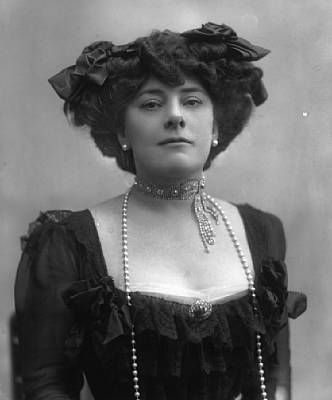
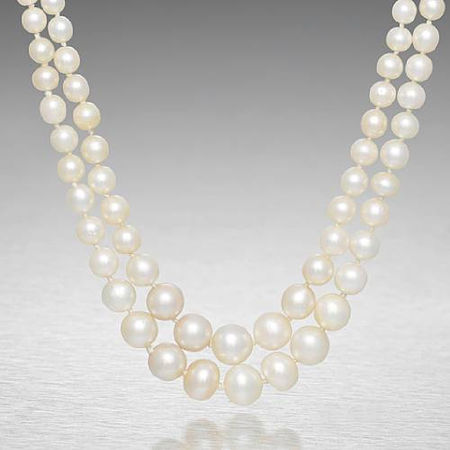
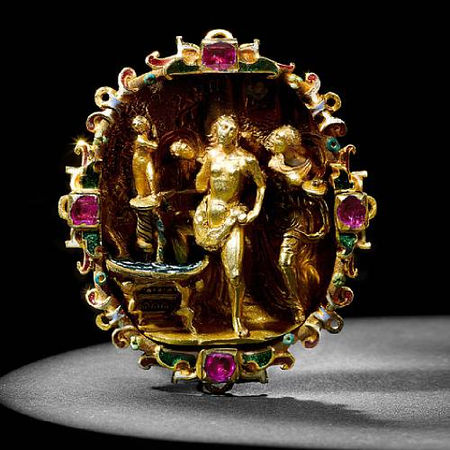
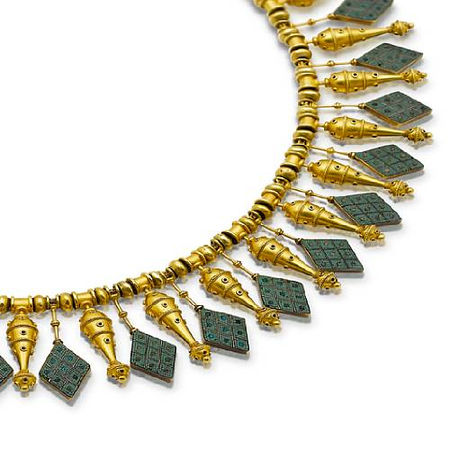

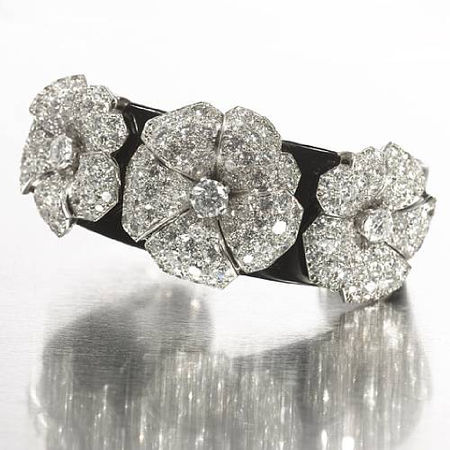
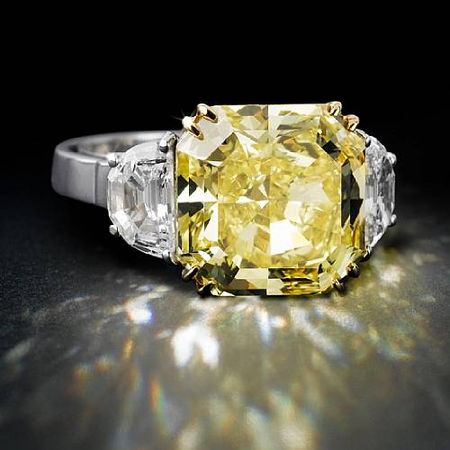
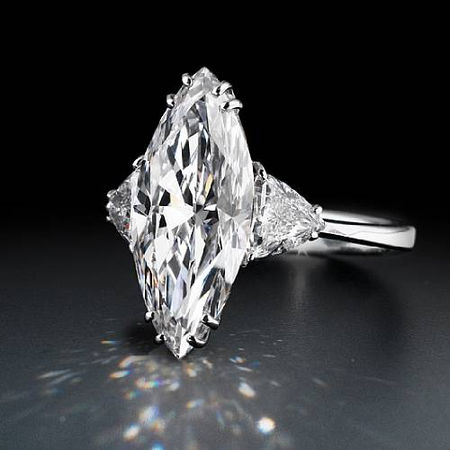
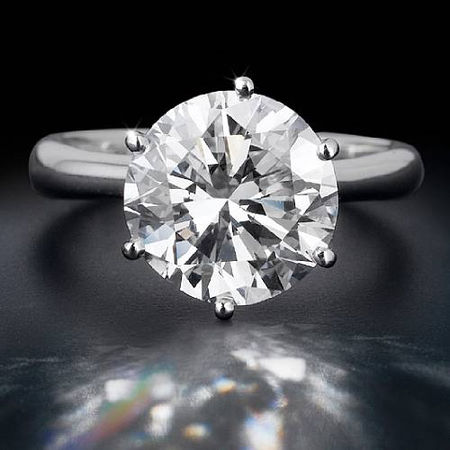


/http%3A%2F%2Fstorage.canalblog.com%2F09%2F07%2F119589%2F47045845_p.jpg)
/http%3A%2F%2Fstorage.canalblog.com%2F36%2F99%2F577050%2F43978347_o.jpg)
/http%3A%2F%2Fstorage.canalblog.com%2F24%2F50%2F119491%2F42479318_p.jpg)
/http%3A%2F%2Fstorage.canalblog.com%2F49%2F86%2F119589%2F41859388_p.jpg)